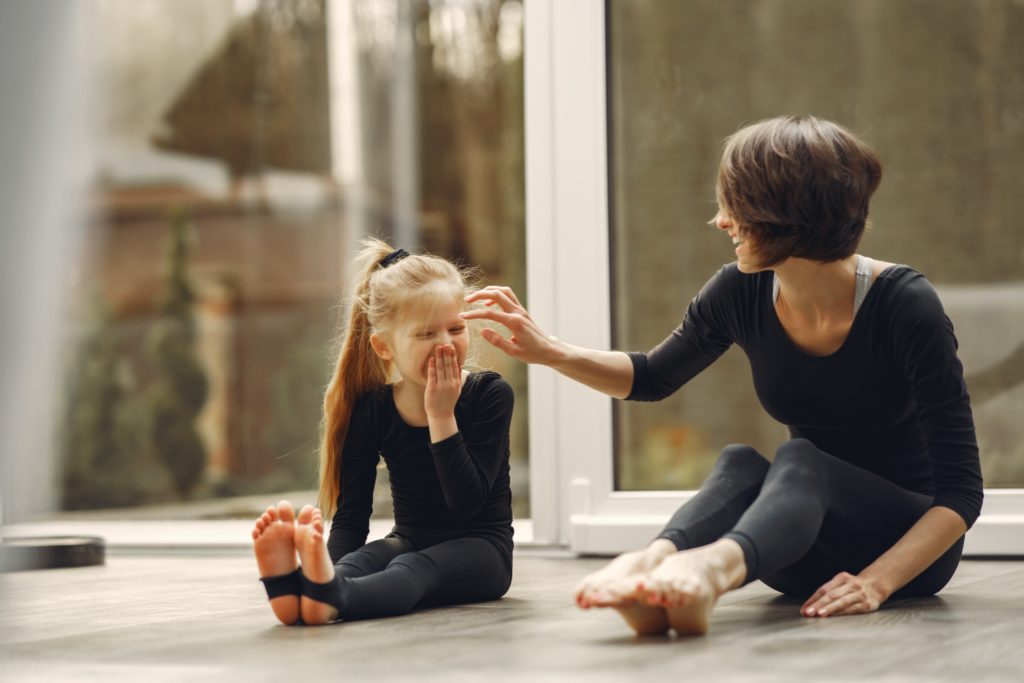
After battling a global pandemic for much of 2020, families across the Washington, D.C. area are more than ready for a fresh start. We all want to feel better, be happier and strengthen our relationships.
Unfortunately, COVID-19 doesn’t seem to be going anywhere just yet. Still, families can find many ways to have a healthier and happier 2021.
Discover some New Year’s resolutions that kids and parents can make together—and tips from experts and local parents on how to successfully execute them.
Focus on gratitude
Just like grown-ups, kids can easily get caught up in the things that go wrong or in their worries about that upcoming math test or swim meet. To ward off these negative thoughts, have your child take a few minutes each evening to tell you three things they are grateful for and three things that made them proud of themselves.
“It’s best to do it at the end of the day because it gives kids an opportunity to reflect on the day in a positive way, which will help them sleep better,” says Rachel Noble, a licensed professional counselor with the INOVA Health System. “And it’s important for parents to take part in it as well.”
Noble also suggests hanging a clothespin line down a long hallway or across a wall. Each day when the kids get home from school—or log out of Zoom—have them hang up one thing they’re proud of, such as artwork, an award they received or a piece of writing. You’ll be surprised that the things they choose won’t always be the same ones you would have chosen.
Get a better night’s sleep
Sufficient sleep can greatly improve cognitive performance, alertness and attention, learning, memory and mood. But according to the Centers for Disease Control and Prevention (CDC), more than one-third of adults, 60% of middle schoolers and 70% of high-school students don’t get enough sleep at night.
The National Sleep Foundation recommends seven to nine hours of sleep per night for adults, eight to 10 hours per night for teens and nine to 11 hours per night for school-age children. Babies and younger children need even more than that.
To ensure your family gets adequate sleep, create calming bedtime routines, have everyone disconnect from electronic devices at least 30 minutes before bedtime, keep bedrooms free from screens and try to make bedtime and wake time around the same time every day—even on weekends.

Carve out screen-free family time
With work, school, sports and other activities taking so much of our time and attention, it can be difficult to steal away quality time as a family. Schedule family dinners, game nights or walks just like you would anything else. Make it a rule that during these activities, all cell phones and electronic devices will go in a basket where they cannot be seen or heard.
“Devices can be a fun part of who we are and help us stay connected to others,” says Noble. “But if we don’t create guardrails around them, we won’t be able to connect with the people right in front of us.”
To get your kids to open up during family time, ask plenty of open-ended questions. Rakelle Mullenix, a mother of two in Annandale, Virginia, has a jar full of fun questions such as “If you could have one superpower, what would it be?” and “What is something you know how to do that you could teach others?” Her family takes turns pulling questions from the jar and answering them out loud. “Every so often, we change the questions to suit our current life,” she says.
Eat the rainbow
We all know by now that we should eat fewer processed foods and more fruits and vegetables. Elizabeth Owens, a certified nutrition specialist in Burke, Virginia, and owner of Wellness With Elizabeth, says a great way for families to do that is to increase the amount of colors they eat through fruits and vegetables.
“Fruits and vegetables get their colors from phytonutrients, chemicals that provide antioxidant and anti-inflammatory benefits,” Owens says. “A good goal for families would be to eat one to two servings of each color each day.”
To encourage her young clients and her own children to eat more colors, Owens gives them a checklist of each color. Each time they eat an orange carrot, green broccoli or a yellow banana, they check off the color on the list. “It keeps kids actively engaged,” Owens says.

Get moving together
The CDC recommends that adults get 150 minutes of moderate-intensity exercise (or 75 minutes of vigorous exercise) each week and that kids get an hour of moderate to vigorous physical activity every day. Exercise helps us to maintain a healthy weight, controls blood pressure, strengthens the heart, lowers the risk of diseases such as Type 2 diabetes and some cancers, and strengthens bones, muscles and joints.
The benefits go beyond the physical, explains Marc Sickel, founder and president of Fitness for Health in Rockville, Maryland. “Physical activity improves self-esteem and confidence. It also leads to an increase in endorphins, which makes us happier,” he says.
To encourage everyone in your household to move more, make a resolution to exercise together as often as possible. Go for a family walk or bike ride. Toss a ball around in the backyard. Go for a swim.
To motivate reluctant kids, Sickel suggests giving them fun challenges. This works for Dori Sophia, a mother of two in Burke, Virginia, and her family.
“We’ll play a basketball game and make it kids vs. adults or one parent and child vs. the other parent and child,” Sophia says. “Or we’ll challenge each other to make baskets from different places and give little rewards if we make them. It’s a lot of fun!”
Don’t be afraid to think outside the box, especially during the winter months. Turn up some music and have a dance party in the living room. Set up a scavenger hunt. Build an obstacle course out of pillows, boxes and other household items.
“You have to make exercise fun for kids,” says Sickel. “Whatever you’re doing, ‘gamify’ it.”
Snack better
With many parents working from home and kids doing virtual learning, it’s easy for everyone to snack throughout the day. To get the most from those snacks, Owens of Wellness With Elizabeth recommends including a protein with each one.
“If there’s just a carbohydrate, you or your child will likely be hungry within an hour,” she says.
Pair pretzels or crackers with a cheese stick or nut butter. Mix some fruit into plain Greek yogurt. Dip celery sticks, carrot sticks and bell pepper strips into a protein-rich dip such as hummus.
Don’t be discouraged if your child doesn’t take to a particular food right away. “Most kids need to try a new food eight to 10 times before they’ll accept it,” says Owens. Continue to offer your children a variety of healthy bites and let them see you eating those same foods. Eventually, they’ll grow to love some of them.
Remember—as with any healthy changes you plan to make, start small and work your way up. If you try to do too much too soon, your family will only get discouraged and you’ll fall back into some of your old habits.
Good luck, and here’s to a happy and healthy new year!
A version of this story originally appeared in our December 2020 issue.







